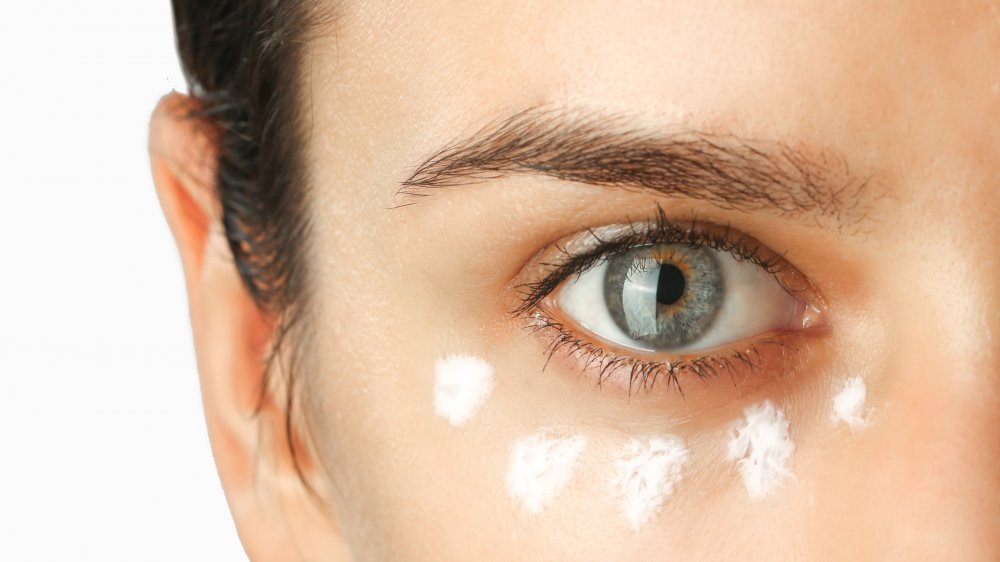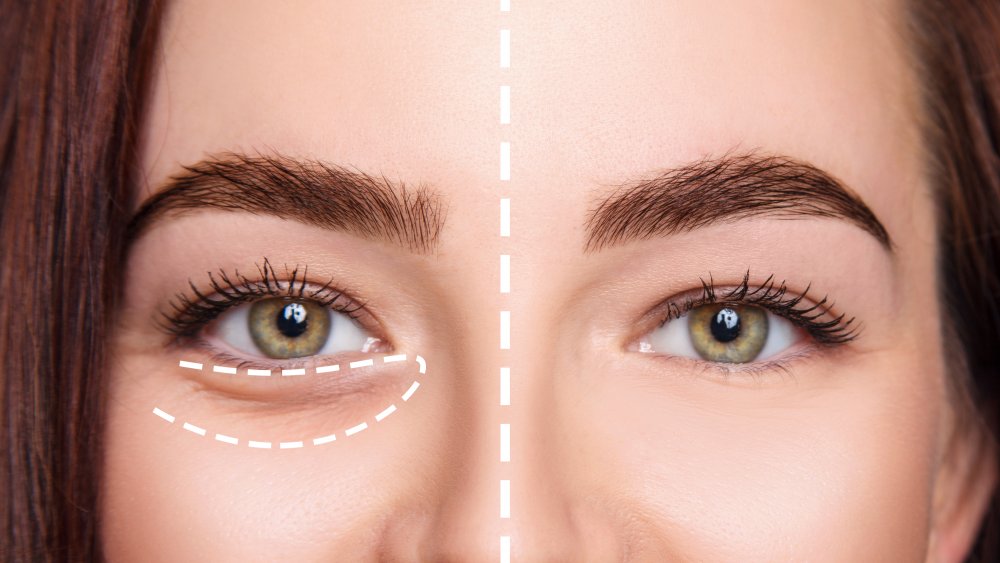Can Eye Creams Really Get Rid Of The Bags Under Your Eyes?
If you ever turn on the TV, you're bound to hear an advertisement for the latest product claiming to reduce those bags under your eyes. Could all of the eye creams flooding the market really be the fountain of youth society has been so eagerly searching for all these years? Before you shell out a pretty penny at the cosmetics counter, here are a few things to consider.
In order to determine which eye cream is best for you, it's important to understand what is actually causing those bags under your eyes. Under eye bags are not all created equal, and some of the common causes include a high-salt diet, allergies, thyroid conditions, genetics, smoking, and the natural aging process (via Johns Hopkins Medicine). Unfortunately, if under eye bags are genetic, there is no amount of eye cream that will help reduce their appearance.
In cases when under eye bags are not hereditary, however, Dr. Helen Knaggs, vice president of R&D at Nu Skin, tells Healthline, "The microvessels in this area become permeable and can leak fluid, which pools under the eye." If the body can resorb this fluid, the swelling will subside, but it may take some time. In the meantime, Dr. Knaggs recommends gently massaging the skin under the eyes in an upwards motion to help improve circulation and hinder the accumulation of fluid under the eyes. It's important to be gentle and not forceful, as the skin under the eyes is the thinnest and most fragile of the whole body.
Do eye creams really work? The verdict
If you want to try an eye cream for yourself, there are two questions to ask yourself — what are the active ingredients, and are your expectations realistic? No eye cream will permanently resolve those under-eye bags, even though some people swear by their results. Creams containing sodium ascorbate, aka vitamin C, can slightly thicken under eye skin, helping conceal dark circles after at least six months of consistent use (via WebMD). Retinols, vitamin A derivatives, have known anti-aging benefits and may reduce the appearance of fine lines and wrinkles over time.
While some eye creams may contain ingredients which have anti-inflammatory or vaso-constricting properties, the consensus seems to be that other, less expensive options may actually be more effective. At-home treatments, such as the use of cold compresses, hemorrhoid creams, and caffeine-containing creams, may temporarily reduce under eye puffiness.
For more permanent solutions, Dr. Shaun Desai, a facial plastic and reconstructive surgeon at Johns Hopkins, recommends either nonsurgical treatments like fillers, chemical peels, and laser resurfacing, or a surgical treatment known as blepharoplasty — an eyelid lift.
Depending on the cause of your under-eye bags, lifestyle changes such as reducing your salt intake, getting adequate sleep, hydrating properly, and applying sunscreen regularly may also yield better results than most over-the-counter eye creams.


